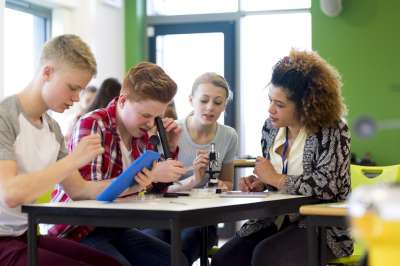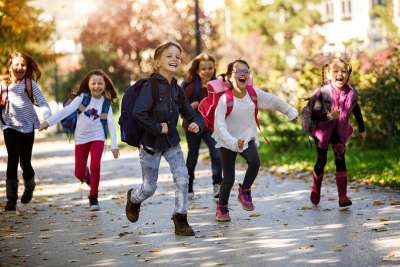How Can You Stretch Students' Thinking?
Classification is often used when sorting items into groups. This basic classification activity helps students demonstrate understanding of the features of a group and why a particular item should be placed in a group.
Many items have easily identifiable features and categories. Students' thinking can be stretched by discussing items that cannot be placed neatly into categories. How would they classify a movie that has action, drama, and romance? In which area of a video store would that movie belong?
Discuss how categories can sometimes be blurred, and address the importance of choosing the appropriate categories when classifying items. Make sure students realize that items can be forced into categories in which they don't belong if the categories are not appropriate, or if there aren't a sufficient number of categories.
Some items are classified based on a personal point of view. For example, if a company were designing a Web site, they might classify items under departments, as the company is organized. However, the customer might expect to find items classified instead by product categories.
Another way of helping students understand categories more completely is to introduce the concept of a continuum. Discuss how rubrics or Olympic gymnastics scores are given. The product or performance will fall somewhere on a continuum from poor to great. A performance that falls into the category of "3" could range from a low 3 to a high 3, but still belongs in the category of "3."
Another type of classification includes things that combine the features of two or more categories, called a hybrid. In the example of placing people in racial categories, Tiger Woods does not neatly fit into one category, and a hybrid category would be more appropriate.
When Can You Use It?
Reading/English
Use classification to look at features of a variety of written materials. Have students group the books in the classroom library into useful categories.
Writing
Classification is useful in defining terms and expanding vocabulary. Have students classify the words in spelling lists or vocabulary lists, and then have them provide reasons for the categories.
Math
Use classification in geometry. Have students classify shapes using different features, such as size, dimensions, or number of sides.
Social Studies
Use classifying to organize new understandings and to explain how point of view can determine the method of classifying items. Have students classify the methods of transportation during the Industrial Revolution. Ask students to categorize the important people involved in World War II.
Science
Classifying can be used to assess student understanding of concepts. Have students describe three clouds and the categories in which they belong. Invite students to take the role of a museum curator and decide where in the museum a group of items belongs and why.
Physical Education
Sports and exercise can be classified. Have students determine whether bowling would qualify as an Olympic sport and in which category it would belong. Ask students to classify sports by their health benefits (e.g., cardiovascular, strength training, and so on.).
Lesson Plans
Classifying Seeds
This lesson is for a primary science class. During the lesson, students will learn classification by sorting seeds into categories based on appearance.














